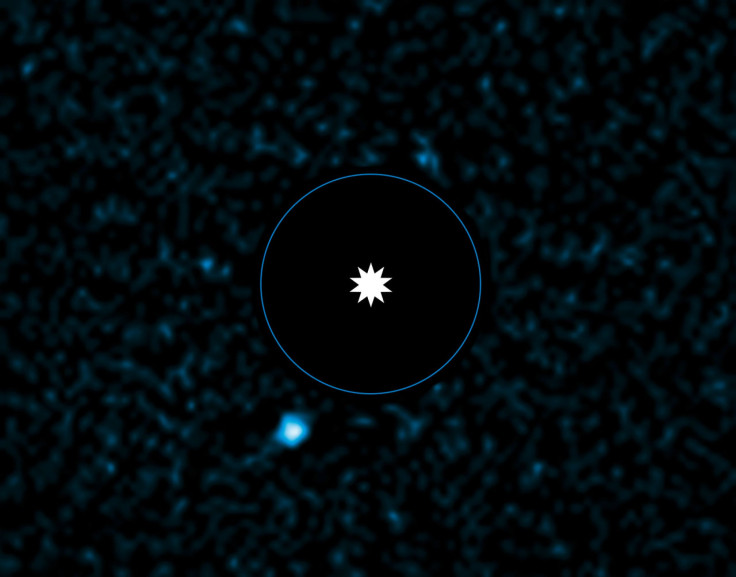Newly Discovered Alien Planet 'HD 95086 b' Gets Its Portrait Taken [PHOTO]

The European Southern Observatory was able to take a rare direct image of an alien planet with roughly four to five times the mass of Jupiter. The exoplanet may be the lightest such planet discovered by astronomers.
Using ESO’s Very Big Telescope in Chile, the team of astronomers was able to take a direct image of HD 95086 b, orbiting around the star HD 95086. In the photo, the planet is seen as a blue dot, and, based on the planet’s brightness, the newly discovered exoplanet has a mass four or five times that of Jupiter, which ESO astronomers believe is the lightest such planet to be captured on camera. The team’s research will be published in Astrophysical Journal Letters.
Exoplanets, or planets outside the solar system, are rarely discovered through direct imagery, and scientists have to resort to indirect ways of a detecting such planets. Exoplanets can be detected when the planet crosses the path of the star they are orbiting, thus dimming that star’s brightness, or by measuring the effect of a gravitational pull of the exoplanet on the star they are orbiting. More than 1,000 exoplanets have been identified through these indirect means, while approximately 12 such planets have been identified through direct imagery, ESO notes.
Julien Rameau, from the Institut de Planetologie et d'Astrophysique de Grenoble and a lead astronomer, said in a statement, “Only a few planets have been directly observed so far, making every single discovery an important milestone on the road to understanding giant planets and how they form.”
The astronomers used several different techniques that created the necessary sharpness to directly image the exoplanet. According to ESO, the astronomers were able to reduce blur caused by the atmosphere and used differential imaging to increase the contrast, letting the planet be more observable compared to the much brighter star it orbits. The astronomers believe the planet is approximately 10 million to 17 million years old and formed from the gas and debris surrounding the star. Anne-Marie Lagrange, an astronomer who worked on the imaging of the exoplanet, said, “It either grew by assembling the rocks that form the solid core and then slowly accumulated gas from the environment to form the heavy atmosphere, or it started forming from a gaseous clump that arose from gravitational instabilities in the disc.”
Another astronomer on the team, Gaël Chauvin, believes the planet may be cool enough to have water vapor and methane gas in its atmosphere, making the planet an important one to observe. Based on the discovery, astronomers could discover more planets that orbit the star, as well as better understand planet formation.
© Copyright IBTimes 2024. All rights reserved.






















